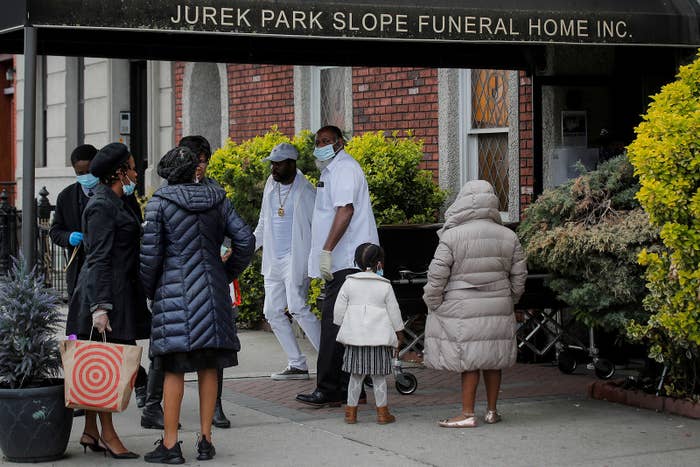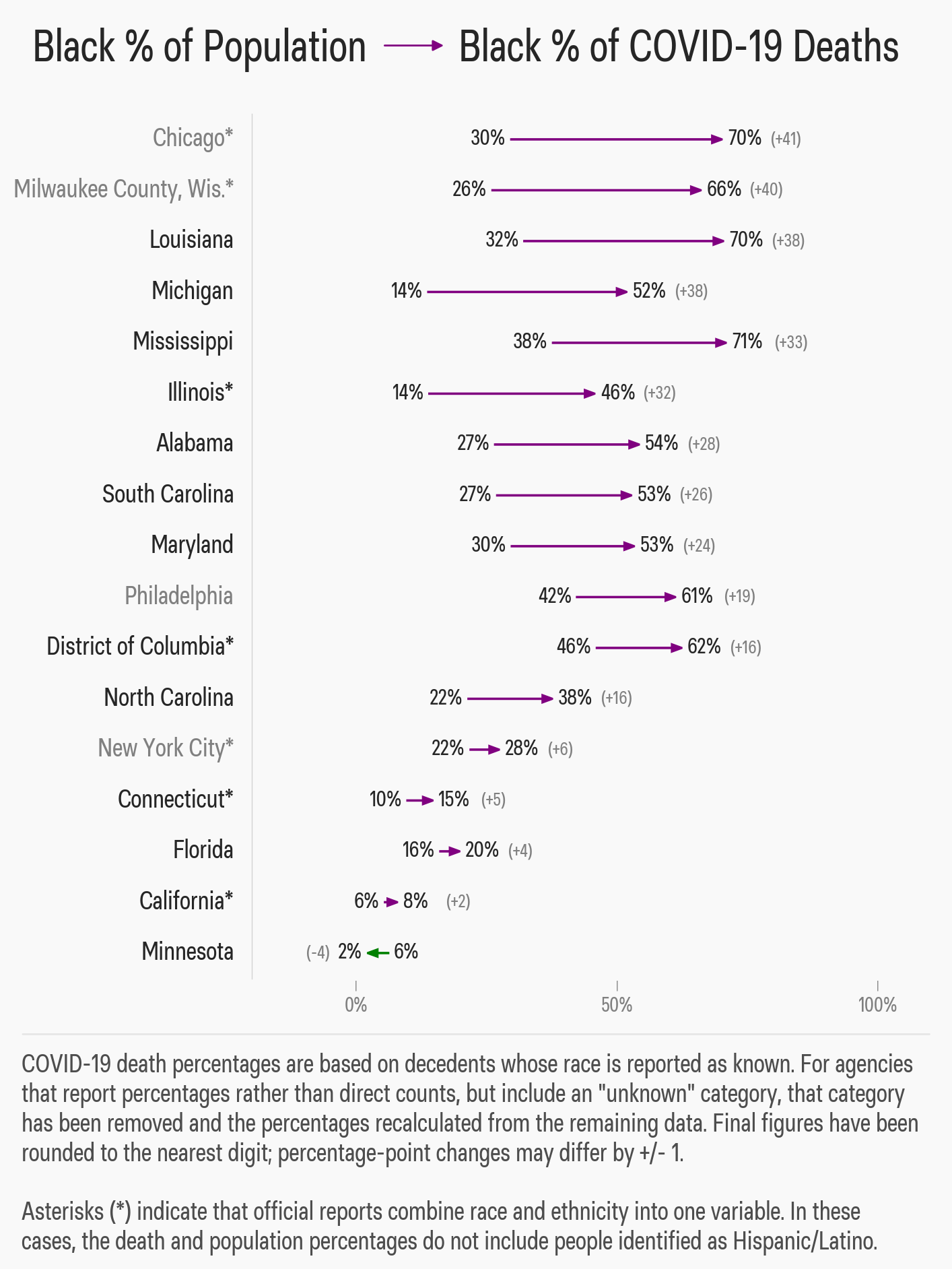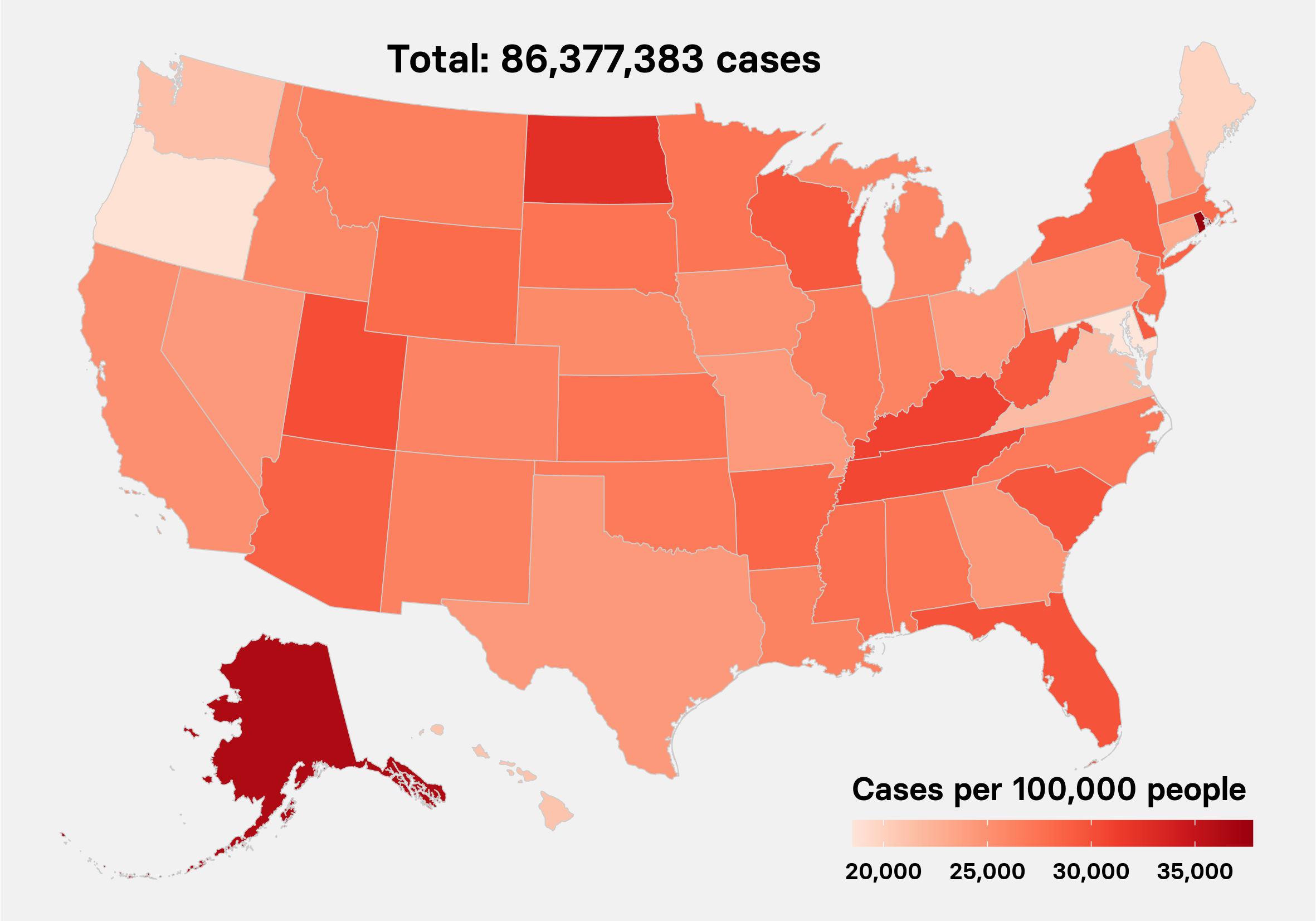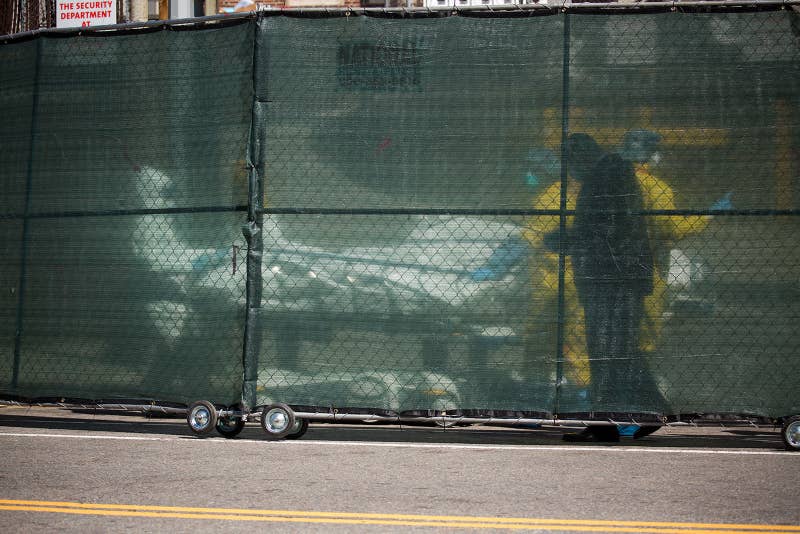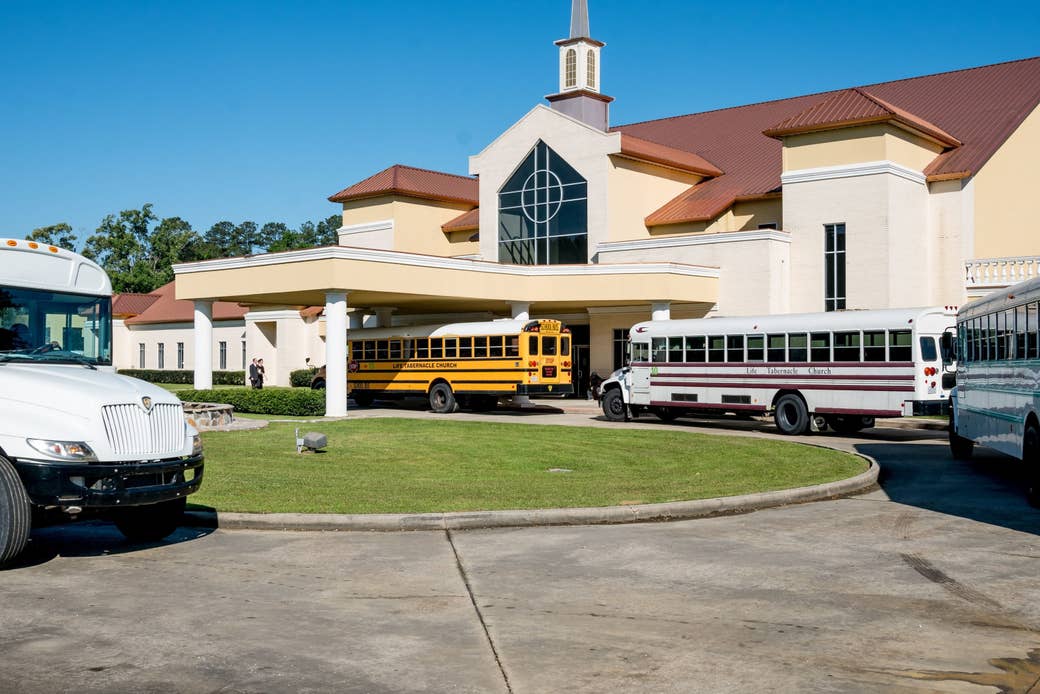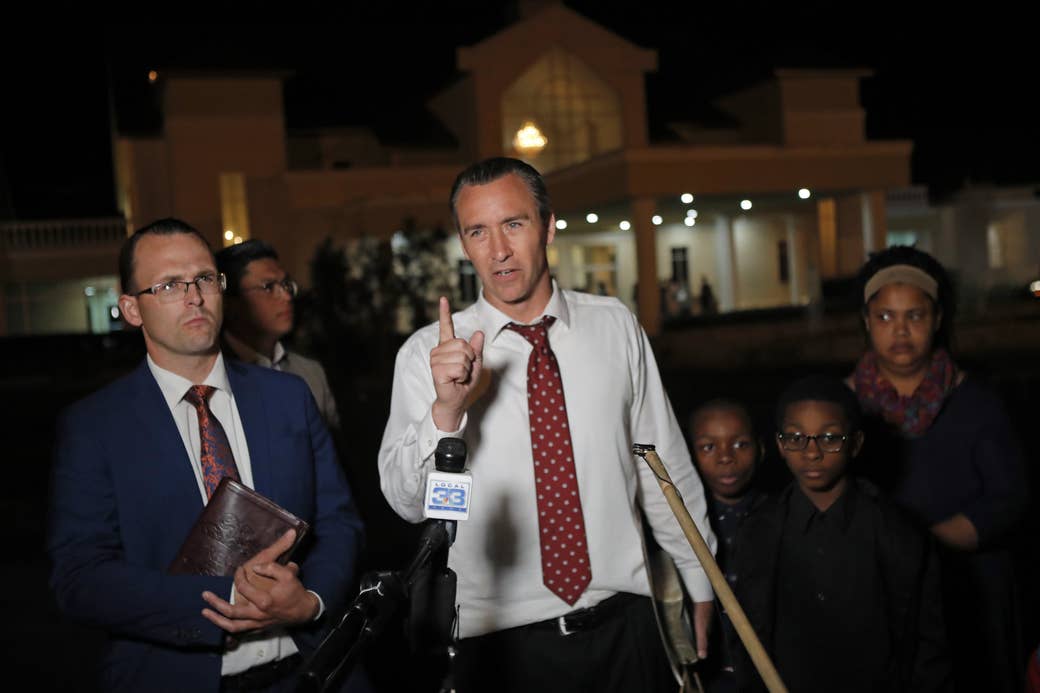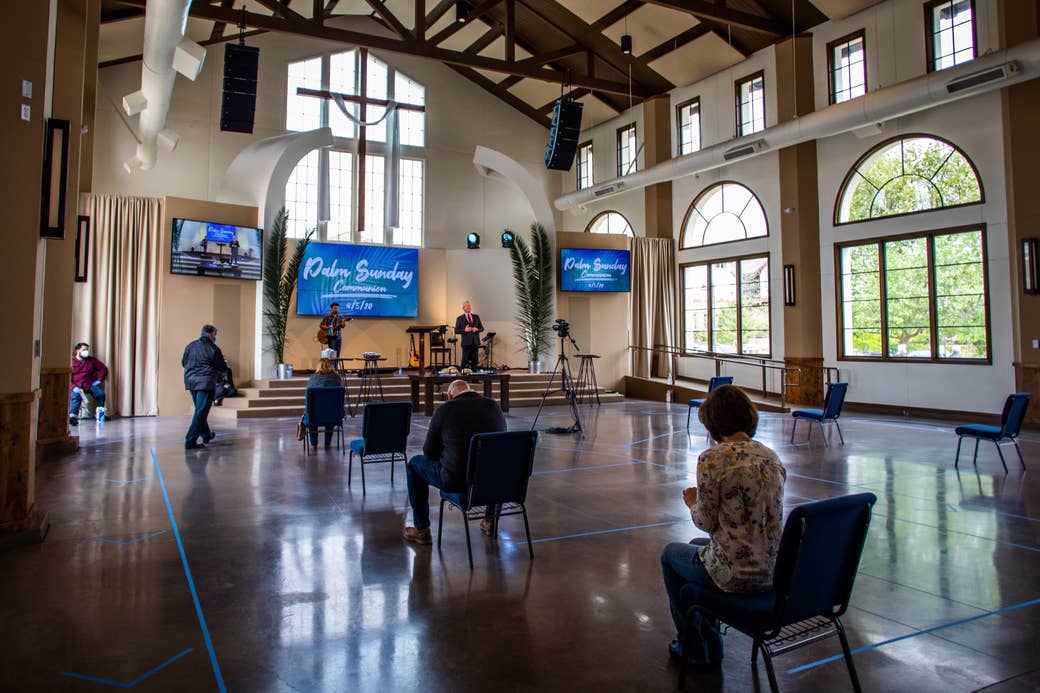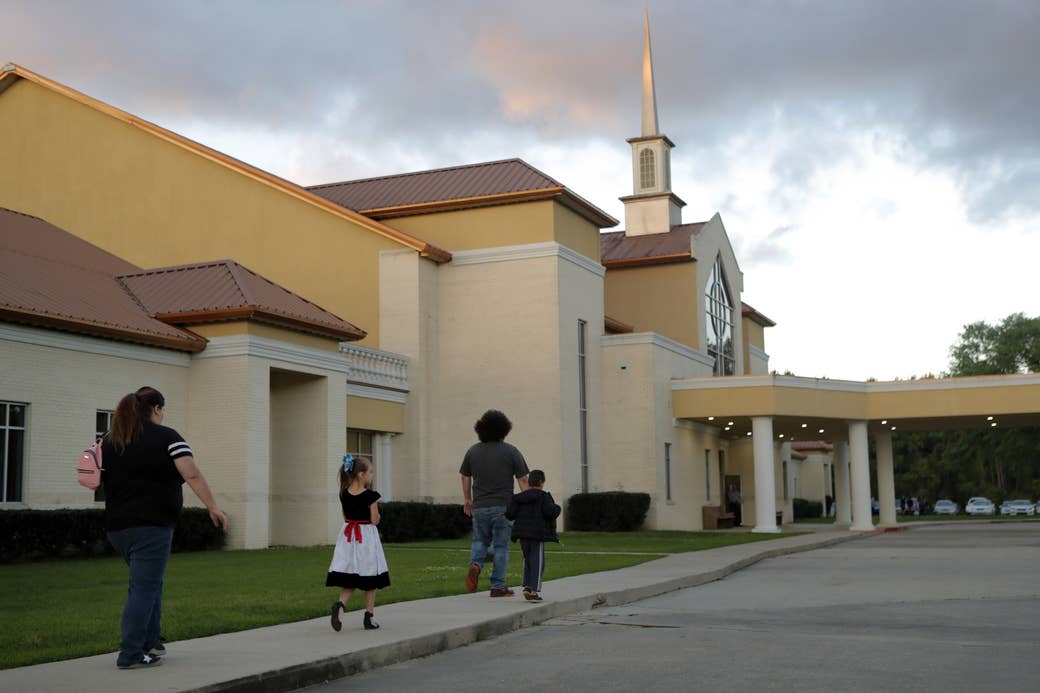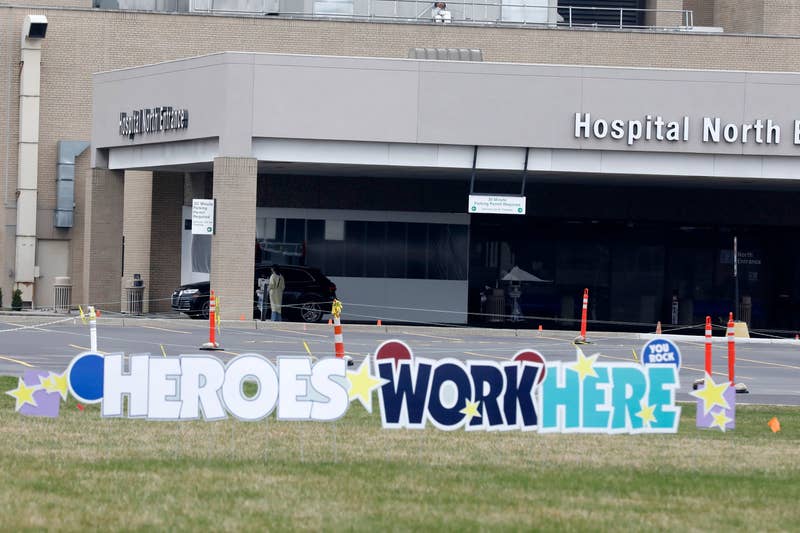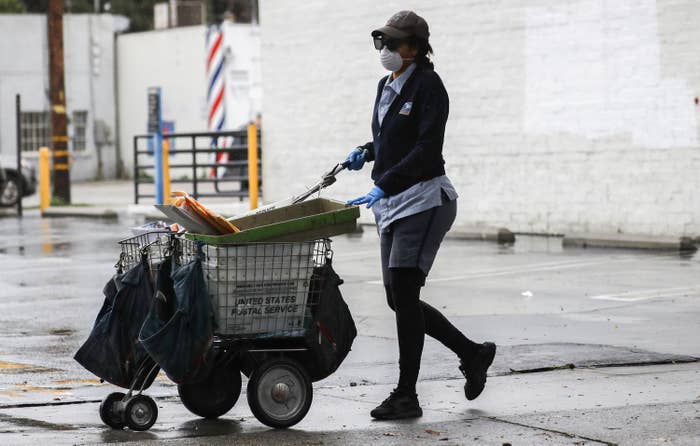The decision to ban the woman and her husband, both of whom are non-Native, has proved controversial.
"As Lakota people, this is not our way to be hurtful and angry," one resident said.
Clarissa-Jan LimBuzz Feed News Reporter April 14, 2020

Courtesy Juliana and Christopher
Christopher was on his way home on April 7 to pick up a few things for his wife, Juliana, who had just been admitted to the hospital with COVID-19, when he received a phone call telling him he could not return to the Pine Ridge Indian Reservation in South Dakota where the couple lived and worked.
Juliana was the reservation’s first confirmed coronavirus case. And they would soon learn that her diagnosis, coupled with their recent trip out-of-state for Juliana’s surgery as state and city governments were taking aggressive measures to restrict movement over the virus, would cause them to be kicked out of their home.
Juliana and Christopher, who asked to be identified by their first names only, had plans to visit California, but they never actually made it there, according to Christopher. On March 26, the couple was in Denver, en route to California, when they found out the procedure was canceled. They returned home the next day, when the tribal council’s stay-at-home order was issued, they said, and immediately quarantined themselves.
Juliana fell ill within the week and was tested for the coronavirus. Days later, as she lay in a Rapid City hospital battling COVID-19, the disease caused by the new coronavirus, the Oglala Sioux Tribal Council voted to banish the couple from the reservation.
"We had none of our belongings," Christopher told BuzzFeed News. "When you get kicked out of your house, you don't have — all the things that you need: toothbrush, clothes, medication, CPAC machine — things that you need to live. We had to replace all those items."
Juliana is originally from Brazil, and neither she or her husband is Native American. They moved to the reservation in 2019 to teach at the Red Cloud Indian School, a private Jesuit institution. Christopher said they felt welcomed by the Lakota people in Pine Ridge and grew close to their colleagues. The students, Christopher said, were well-behaved and came to school "with such sweet spirits."
So when Christopher got a call from the school superintendent en route from the hospital to the reservation, he did not expect to be told not to come back, and that the school president had sealed off the couple's house on the Red Cloud campus in Pineapple, South Dakota.
The next day, by a 10–9 vote — with President Julian Bear Runner acting as tie-breaker — the Oglala Sioux Tribal Council, the reservation's governing body, voted to banish them from Pine Ridge.
"That was a really hard decision to make," Bear Runner said in an interview with KILI radio Wednesday, April 8. "Our members, the people that elected us to come into office put us in those positions to protect our health and our general welfare. And for me, it was negligent that this individual would still leave after laws were already in place."

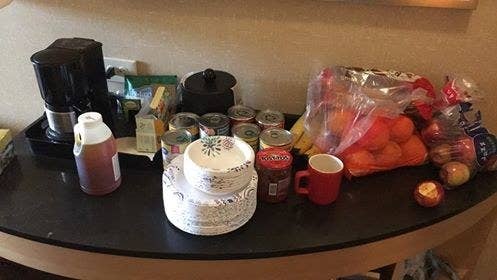
Courtesy Christopher
Juliana's medication. Fruit and canned goods the couple bought after being banished.
The Oglala Sioux Tribe had been bracing for weeks for the coronavirus to hit the reservation. Chase Iron Eyes, a spokesperson for Bear Runner's office and an activist, told BuzzFeed News that Pine Ridge has been in something of a nonstop emergency mode, barely being able to recover from one disaster before another hits.
With support from the federal government lacking and levels of bureaucracy to overcome, many Native American tribes, already struggling with historical oppression and economic challenges, face the daunting task of protecting themselves from a global pandemic.
"It's almost like we live in a constant state of crisis," Iron Eyes said about Pine Ridge.
In early March, Bear Runner declared a state of emergency on the reservation and requested help from the federal government to prepare for a coronavirus outbreak. On March 27, a shelter-in-place ordinance was issued, with exemptions for medical travel.
Days later, tribal leaders put into place a curfew and a border ordinance banning nonresidents from entering the reservation on nonessential business.
When the council got word on April 7 that Juliana was the reservation's first person to contract the coronavirus, and that she recently purportedly traveled to California, a virus hotspot, they acted fast to banish the couple.
Banishment is a severe, but rare form of punishment that can apply to tribal members and nonmembers alike. The last non-Native person to be banished from Pine Ridge Reservation was South Dakota Gov. Kristi Noem, Iron Eyes said, over her support for legislation cracking down on Keystone XL Pipeline protesters.
The punishment is permanent, though the Oglala Sioux Tribal Council can rescind the ban, and the person banished can appeal.
For Christopher, finding out Juliana's COVID-19 diagnosis then being told they weren't allowed to go home in the span of a couple of days was a difficult pill to swallow.
"This was very hurtful," he said. "Especially in this economy. And especially when you just want to recover from being sick."
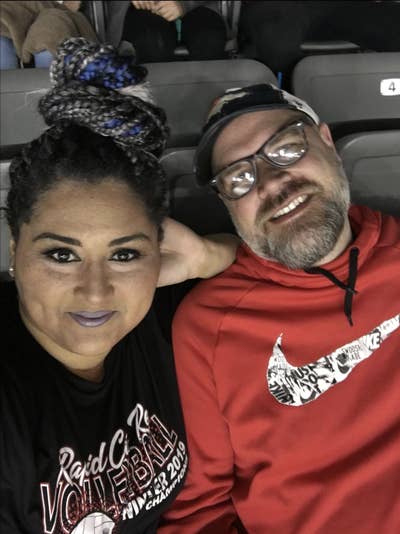
Courtesy Juliana and Christopher
Christopher said the tribal council got several details wrong in making their decision. The couple did not set foot in California for the surgery, he said; they made it as far as Denver when they found out the procedure was canceled, then flew back. He also said they traveled out of state on March 26, one day before the shelter-in-place ordinance was issued, and the school had approved their travel.
When they came back from Denver, Christopher said they followed the school's travel guidelines and self-quarantined for what was supposed to be 14 days. But Juliana started feeling unwell, and once she checked all the boxes for COVID-19 symptoms, she went to get tested.
Juliana and Christopher were caught off-guard by the tribal council's decision to banish them, partly because they weren't interviewed or contacted by tribal leaders before the vote.
"They have not spoken to us at all. They never asked our side of the story or spoke to us directly," he said.
"Even though we did everything we were asked to do and technically did not break any rules," Christopher said, "we apologize that we traveled at this time and ask the community for forgiveness in not taking this more seriously."
Their banishment has proved controversial. Many tribal members on and off the reservation have expressed their support for the council, praising the leaders for protecting their community. But they've also been criticized by those who say the decision is too harsh.
Anne Eagle Bull, an enrolled member of the Oglala Sioux tribe whose children attend Our Lady of Lourdes Elementary, the K–8 school that’s part of the Red Cloud Indian School system where Juliana works, said the negative comments about Juliana and her husband have really bothered her.
"As Lakota people, this is not our way to be hurtful and angry," she told BuzzFeed News. "If somebody's taking the time to come to our reservation, which is — you know, often looked at as a Third World country, that says a lot about that person. That that person has passion. That that person is willing to sacrifice some things to come here."
Iron Eyes acknowledged that the banishment "doesn't appear to be very welcoming of us."
"It's caused division right down the middle," he said. Though Iron Eyes said he would have liked to see the couple's case handled differently, he believes the vote has caused others on the reservation to take safety measures more seriously.
For now, Christopher said he's grateful for the support they've received from the Lakota community and the Red Cloud faculty. Protestant churches in Rapid City have been "of great help" too, he said, sending them food, toiletries, and other essentials that they couldn't go home to collect.
After banishing the couple, tribal leaders put the reservation on lockdown for 48 hours until April 10. It was reinstated for 14 days beginning April 11.
On Tuesday, April 14, the South Dakota Health Department sent Juliana a letter, which the couple shared with BuzzFeed News, informing her that she “successfully completed a period of isolation and is no longer considered able to transmit the novel coronavirus.”
Bear Runner said the couple is welcome to appeal the council's decision.
"We tried to understand both sides of the story," he explained in his April 8 interview. "But if you really think about it, if this person had accidentally come into contact with one of your loved ones...you would be upset."
He also addressed concerns about whether Juliana's banishment sets a precedent for non-Natives on the reservation who test positive for the coronavirus, saying the council won't banish them if they follow the rules.
"Just don't act negligent. You know that it says shelter in place. You know the precautions that need to take place," he said.
Christopher said they know the council is only trying to protect their people, and they don't have any bad feelings toward them for the decision. He believes that in trying to make sure everyone follows the ordinances, the council "had to make an example out of someone."
"Unfortunately," he said, "that was us."
Clarissa-Jan LimBuzz Feed News Reporter April 14, 2020

Courtesy Juliana and Christopher
Christopher was on his way home on April 7 to pick up a few things for his wife, Juliana, who had just been admitted to the hospital with COVID-19, when he received a phone call telling him he could not return to the Pine Ridge Indian Reservation in South Dakota where the couple lived and worked.
Juliana was the reservation’s first confirmed coronavirus case. And they would soon learn that her diagnosis, coupled with their recent trip out-of-state for Juliana’s surgery as state and city governments were taking aggressive measures to restrict movement over the virus, would cause them to be kicked out of their home.
Juliana and Christopher, who asked to be identified by their first names only, had plans to visit California, but they never actually made it there, according to Christopher. On March 26, the couple was in Denver, en route to California, when they found out the procedure was canceled. They returned home the next day, when the tribal council’s stay-at-home order was issued, they said, and immediately quarantined themselves.
Juliana fell ill within the week and was tested for the coronavirus. Days later, as she lay in a Rapid City hospital battling COVID-19, the disease caused by the new coronavirus, the Oglala Sioux Tribal Council voted to banish the couple from the reservation.
"We had none of our belongings," Christopher told BuzzFeed News. "When you get kicked out of your house, you don't have — all the things that you need: toothbrush, clothes, medication, CPAC machine — things that you need to live. We had to replace all those items."
Juliana is originally from Brazil, and neither she or her husband is Native American. They moved to the reservation in 2019 to teach at the Red Cloud Indian School, a private Jesuit institution. Christopher said they felt welcomed by the Lakota people in Pine Ridge and grew close to their colleagues. The students, Christopher said, were well-behaved and came to school "with such sweet spirits."
So when Christopher got a call from the school superintendent en route from the hospital to the reservation, he did not expect to be told not to come back, and that the school president had sealed off the couple's house on the Red Cloud campus in Pineapple, South Dakota.
The next day, by a 10–9 vote — with President Julian Bear Runner acting as tie-breaker — the Oglala Sioux Tribal Council, the reservation's governing body, voted to banish them from Pine Ridge.
"That was a really hard decision to make," Bear Runner said in an interview with KILI radio Wednesday, April 8. "Our members, the people that elected us to come into office put us in those positions to protect our health and our general welfare. And for me, it was negligent that this individual would still leave after laws were already in place."


Courtesy Christopher
Juliana's medication. Fruit and canned goods the couple bought after being banished.
The Oglala Sioux Tribe had been bracing for weeks for the coronavirus to hit the reservation. Chase Iron Eyes, a spokesperson for Bear Runner's office and an activist, told BuzzFeed News that Pine Ridge has been in something of a nonstop emergency mode, barely being able to recover from one disaster before another hits.
With support from the federal government lacking and levels of bureaucracy to overcome, many Native American tribes, already struggling with historical oppression and economic challenges, face the daunting task of protecting themselves from a global pandemic.
"It's almost like we live in a constant state of crisis," Iron Eyes said about Pine Ridge.
In early March, Bear Runner declared a state of emergency on the reservation and requested help from the federal government to prepare for a coronavirus outbreak. On March 27, a shelter-in-place ordinance was issued, with exemptions for medical travel.
Days later, tribal leaders put into place a curfew and a border ordinance banning nonresidents from entering the reservation on nonessential business.
When the council got word on April 7 that Juliana was the reservation's first person to contract the coronavirus, and that she recently purportedly traveled to California, a virus hotspot, they acted fast to banish the couple.
Banishment is a severe, but rare form of punishment that can apply to tribal members and nonmembers alike. The last non-Native person to be banished from Pine Ridge Reservation was South Dakota Gov. Kristi Noem, Iron Eyes said, over her support for legislation cracking down on Keystone XL Pipeline protesters.
The punishment is permanent, though the Oglala Sioux Tribal Council can rescind the ban, and the person banished can appeal.
For Christopher, finding out Juliana's COVID-19 diagnosis then being told they weren't allowed to go home in the span of a couple of days was a difficult pill to swallow.
"This was very hurtful," he said. "Especially in this economy. And especially when you just want to recover from being sick."

Courtesy Juliana and Christopher
Christopher said the tribal council got several details wrong in making their decision. The couple did not set foot in California for the surgery, he said; they made it as far as Denver when they found out the procedure was canceled, then flew back. He also said they traveled out of state on March 26, one day before the shelter-in-place ordinance was issued, and the school had approved their travel.
When they came back from Denver, Christopher said they followed the school's travel guidelines and self-quarantined for what was supposed to be 14 days. But Juliana started feeling unwell, and once she checked all the boxes for COVID-19 symptoms, she went to get tested.
Juliana and Christopher were caught off-guard by the tribal council's decision to banish them, partly because they weren't interviewed or contacted by tribal leaders before the vote.
"They have not spoken to us at all. They never asked our side of the story or spoke to us directly," he said.
"Even though we did everything we were asked to do and technically did not break any rules," Christopher said, "we apologize that we traveled at this time and ask the community for forgiveness in not taking this more seriously."
Their banishment has proved controversial. Many tribal members on and off the reservation have expressed their support for the council, praising the leaders for protecting their community. But they've also been criticized by those who say the decision is too harsh.
Anne Eagle Bull, an enrolled member of the Oglala Sioux tribe whose children attend Our Lady of Lourdes Elementary, the K–8 school that’s part of the Red Cloud Indian School system where Juliana works, said the negative comments about Juliana and her husband have really bothered her.
"As Lakota people, this is not our way to be hurtful and angry," she told BuzzFeed News. "If somebody's taking the time to come to our reservation, which is — you know, often looked at as a Third World country, that says a lot about that person. That that person has passion. That that person is willing to sacrifice some things to come here."
Iron Eyes acknowledged that the banishment "doesn't appear to be very welcoming of us."
"It's caused division right down the middle," he said. Though Iron Eyes said he would have liked to see the couple's case handled differently, he believes the vote has caused others on the reservation to take safety measures more seriously.
For now, Christopher said he's grateful for the support they've received from the Lakota community and the Red Cloud faculty. Protestant churches in Rapid City have been "of great help" too, he said, sending them food, toiletries, and other essentials that they couldn't go home to collect.
After banishing the couple, tribal leaders put the reservation on lockdown for 48 hours until April 10. It was reinstated for 14 days beginning April 11.
On Tuesday, April 14, the South Dakota Health Department sent Juliana a letter, which the couple shared with BuzzFeed News, informing her that she “successfully completed a period of isolation and is no longer considered able to transmit the novel coronavirus.”
Bear Runner said the couple is welcome to appeal the council's decision.
"We tried to understand both sides of the story," he explained in his April 8 interview. "But if you really think about it, if this person had accidentally come into contact with one of your loved ones...you would be upset."
He also addressed concerns about whether Juliana's banishment sets a precedent for non-Natives on the reservation who test positive for the coronavirus, saying the council won't banish them if they follow the rules.
"Just don't act negligent. You know that it says shelter in place. You know the precautions that need to take place," he said.
Christopher said they know the council is only trying to protect their people, and they don't have any bad feelings toward them for the decision. He believes that in trying to make sure everyone follows the ordinances, the council "had to make an example out of someone."
"Unfortunately," he said, "that was us."
Clarissa-Jan Lim is a reporter and editor at BuzzFeed News. She is based in New York.
